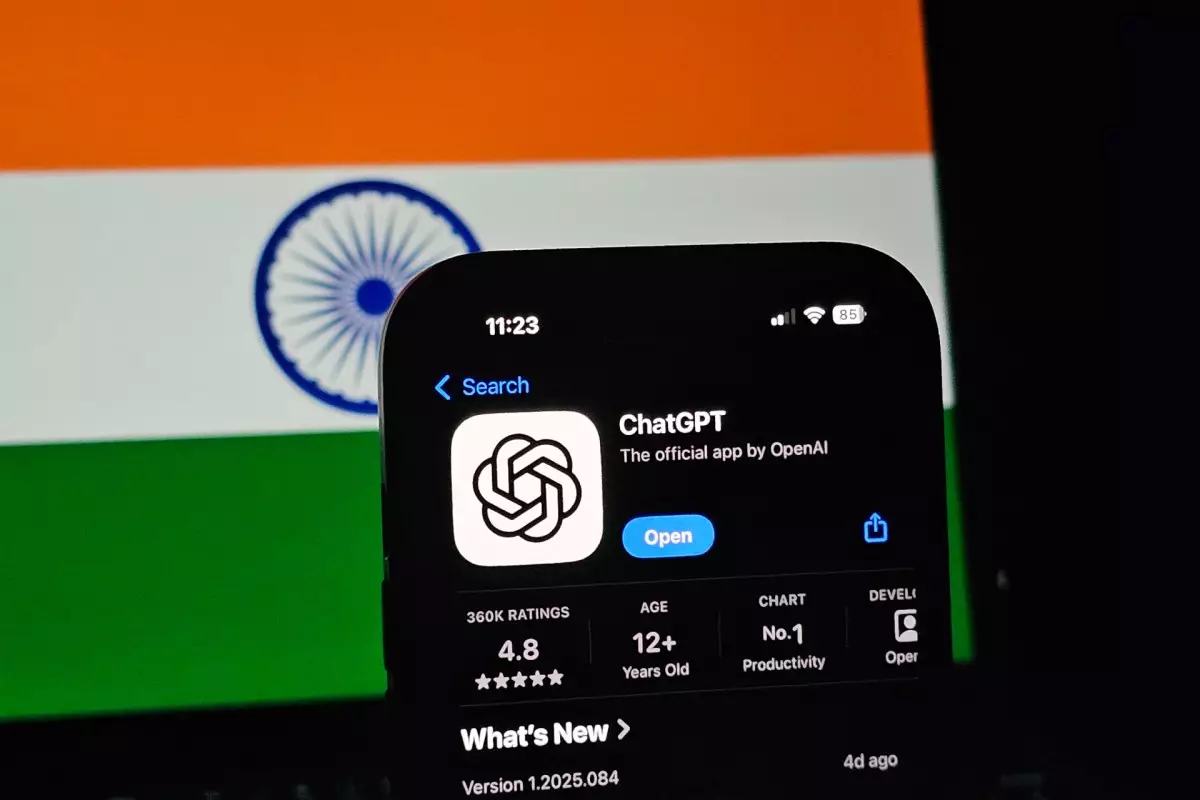Over the past decade, the allure of India’s burgeoning internet landscape has drawn attention from global tech giants, with OpenAI as a notable participant. While the company heralds India as a key player in its expansion strategy, data reveals disparities that expose challenges in converting interest into revenue. With over 950 million internet users, India presents a formidable opportunity for OpenAI to carve a niche with ChatGPT, especially among a demographic eager for advanced digital solutions. However, evidence suggests that the current engagement levels may not be adequate to match user spending in other markets, specifically the United States.
Revenue Realities: A Comparative Analysis
Recent figures from SensorTower paint a telling picture of the financial landscape. Users in India have reportedly spent a mere $8 million on ChatGPT subscriptions in 2023. This figure starkly contrasts with the $330 million attributed to U.S. users, raising important questions about consumer engagement and pricing strategy. The discrepancy suggests a significant disconnect that OpenAI must address to maximize its potential in this lucrative market. The relatively high cost of its subscription model—$20 per month—positions ChatGPT as a premium service in a country where digital subscriptions typically cater to far more modest budgets.
Local Pricing: The Key to Expansion
One of the major barriers hindering OpenAI’s revenue growth in India is the absence of localized pricing. When users encounter a subscription cost over ₹1,700, many view it as a prohibitive expense. Instead, a more nuanced pricing strategy that aligns with local economic conditions could foster greater adoption. While OpenAI’s COO, Brad Lightcap, remarked on India’s significant growth potential, the effectiveness of this proclamation hinges on actionable steps that could make ChatGPT more accessible to the average consumer.
Strategic Partnerships: A Path Forward
Recognizing the challenges, OpenAI is reportedly seeking strategic alliances, particularly with industry heavyweights like Reliance Jio. Such partnerships could significantly enhance ChatGPT’s visibility and accessibility by integrating it into existing mobile ecosystems. By leveraging Jio’s expansive reach, OpenAI could potentially introduce ChatGPT to millions more users, drastically shifting the current engagement metrics. However, this collaboration should be underpinned by competitive pricing structures that reflect the diversity of India’s market.
Organic Growth: A Humble Yet Promising Start
Despite the roadblocks, there is an encouraging trend for ChatGPT in India. Data from Appfigures shows that more than 20% of downloads for the ChatGPT Android app this year have originated from India. This organic growth indicates a promising interest in generative AI technologies among Indian users, suggesting that while monetizing this interest remains a challenge, a foundation has been laid for future expansion.
While OpenAI’s road to establishing ChatGPT as a leading digital service in India is fraught with challenges, including pricing and user engagement, the potential remains vast. The company’s ability to tailor its offerings to meet the unique market dynamics could ultimately unlock the true potential of India’s digital revolution.

